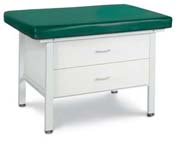ANKLE SPRAINS
At one time or another you may have “rolled “or “twisted” your ankle during a game or practice. It may have hurt for a while and you were unable to put pressure on it, but within a few minutes you were able to walk on it and resume the game or practice. If this happens only once, you may not be thinking anything of it, but if it happens again in the next game or practice, there may be a serious problem waiting to happen.
 Recurrent ankle sprains can lead to surgery and season ending careers if not addressed the first time you sprain your ankle. Sprains do not just occur on the court, you can “roll” your ankle just coming down the stairs or walking on the beach (uneven surface). Once you sprain your ankle, you may not notice anything, but within a few hours or days you may notice swelling on the outside of you ankle (lateral malleoli).
Recurrent ankle sprains can lead to surgery and season ending careers if not addressed the first time you sprain your ankle. Sprains do not just occur on the court, you can “roll” your ankle just coming down the stairs or walking on the beach (uneven surface). Once you sprain your ankle, you may not notice anything, but within a few hours or days you may notice swelling on the outside of you ankle (lateral malleoli).
What Happens when you sprain you ankle?
The most common way athletes sprain their ankle is an inversion sprain, in which the foot turns inward and plantarflexed (pointed down). The muscle that prevents the foot from turning inward is called the peroneal muscle. It is comprised of two muscles that start high on the fibula bone (bone on outside of lower leg) and travels behind the lateral malleoli (lateral ankle) going across the bottom of your foot and inserts on the base of 5th metatarsal (pinky toe). When the force becomes too great and the peroneals can no longer keep the ankle from turning over, the lateral ligament (connects bone to bone) becomes stretched and / or torn. Each ankle has different ratings based on the severity of the sprain. It could range from mild swelling to a complete tear of the muscle or ligament. In the most severe case surgery may occur.
What should be done if you sprain your ankle?
 When you sprain your ankle, the signs of swelling or discoloration may not be evident right away. If it happens in the middle of a game, and progressively feels worse as you play, inform your coach or athletic trainer, DO NOT PLAY THROUGH THE PAIN. Treatment can be applied during the game on the sidelines or at home, just remember the simple acronym R.I.C.E.
When you sprain your ankle, the signs of swelling or discoloration may not be evident right away. If it happens in the middle of a game, and progressively feels worse as you play, inform your coach or athletic trainer, DO NOT PLAY THROUGH THE PAIN. Treatment can be applied during the game on the sidelines or at home, just remember the simple acronym R.I.C.E.
R- Rest – rest your ankle.
I – Ice – once you roll your ankle apply ice on the area for 10-15 minutes then off for 90 minutes, then apply again, for the next 48-72 hours. If using a chemical store - bought ice pack, place a thin towel between the pack and the skin to prevent a chemical ice burn.
C- Compression – wrap a compression bandage starting from the toes and continue with even compression towards mid calf. Loosen wrap if toes turn blue or feel cold. Do not wear at night.
E-Elevation- Elevate your ankle so that the ankle is above your heart. This allows gravity to draw some of the swelling from the ankle.
 Once the swelling has gone down and you are able to walk and return to your sport, you will forget to take preventative measures to avoid spraining your ankle again. There are simple exercises that help to strengthen the muscles surrounding the ankle that can be done with elastic tubing and balance activities. Speak to your athletic trainer or stop by your local Physical Therapy facility and speak with the clinical staff to get some ideas on how to prevent ankle sprains
Once the swelling has gone down and you are able to walk and return to your sport, you will forget to take preventative measures to avoid spraining your ankle again. There are simple exercises that help to strengthen the muscles surrounding the ankle that can be done with elastic tubing and balance activities. Speak to your athletic trainer or stop by your local Physical Therapy facility and speak with the clinical staff to get some ideas on how to prevent ankle sprains
Dean Maddalone is a Physical Therapist Assistant and Certified Strength and Conditioning Specialist who coaches athletes of all ages at the Professional Athletic Performance Center located at 645 Stewart Ave in Garden City. For more information or questions email Dean at [email protected].
Although information on this site is believed to be correct, the information is provided on an "as is" basis and its accuracy and/or completeness cannot be guaranteed. No warranty of an kind is given with respect to the contents of this website.



